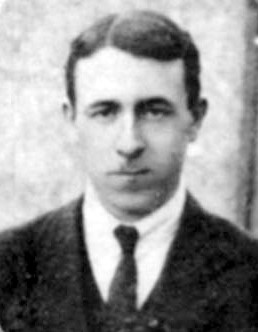Dinny Lacey facts for kids
Quick facts for kids
Dinny Lacey
|
|
|---|---|
 |
|
| Birth name | Denis Lacey |
| Born | 31 May 1889 Attybrick, County Tipperary, Ireland |
| Died | 18 February 1923 (aged 33) Glen of Aherlow, County Tipperary, Ireland |
| Service/ |
|
| Unit | Flying Column commander 3rd Tipperary Brigade, IRA |
| Battles/wars | |
Denis Lacey (born May 31, 1889 – died February 18, 1923), also known as Dinny Lacey, was an important Irish officer. He played a key role in the Irish War of Independence and later in the Irish Civil War.
Contents
Dinny Lacey's Early Life and Role in the War of Independence
Growing Up in Tipperary
Denis Lacey was born in 1889 in a small village called Attybrick. This village is near Annacarty in County Tipperary, Ireland. His parents were Thomas Lacy and Ellen Hayes. Before the War of Independence, he worked as a clerk and managed a coal business in Tipperary Town.
Joining the Fight for Independence
Lacey joined the Irish Volunteers in 1913. This group wanted Ireland to be independent from British rule. In 1914, he also joined a secret group called the Irish Republican Brotherhood (IRB). Seán Treacy, another important Irish leader, introduced him to the IRB.
Leading a Flying Column
During the Irish War of Independence (1919–1921), Dinny Lacey became a commander. He led a special group called a "flying column" for the 3rd Tipperary Brigade of the Irish Republican Army (IRA). A flying column was a small, fast-moving group of soldiers. They would surprise British forces with quick attacks.
His column had two successful ambushes:
- They attacked British soldiers near Thomastown, close to Golden. Six British soldiers were killed.
- They also attacked four police officers (from the Royal Irish Constabulary) at Lisnagaul in the Glen of Aherlow.
In April 1921, after another ambush near Clogheen, Lacey's group captured a British police inspector named Gilbert Potter. Potter was later executed. This was in response to the British hanging of Irish republican prisoners.
Dinny Lacey and the Irish Civil War
The Anglo-Irish Treaty and the Split
In December 1921, a major disagreement happened among the Irish fighters. This was about the Anglo-Irish Treaty. This treaty offered Ireland some independence, but it also meant Ireland would remain part of the British Commonwealth.
Dinny Lacey was against the Treaty. Most of his men agreed with him and followed his lead. Lacey then took command of the Third Tipperary Brigade. This happened because Séumas Robinson, who was the previous commander, moved to lead a larger anti-Treaty group.
Fighting in the Civil War
The disagreement over the Treaty led to the Irish Civil War (June 1922 – May 1923). During this war, Dinny Lacey organized guerrilla attacks in the Tipperary area. These attacks were against the Irish Free State forces, who supported the Treaty.
His Death
Dinny Lacey was killed on February 18, 1923. He was fighting against Free State troops at Ballydavid, near Bansha in the Glen of Aherlow. He was 33 years old.
More than 1,000 Free State troops, led by General John T. Prout, surrounded the Glen. They wanted to break up Lacey's group. Lacey and four of his men were staying there. Dinny Lacey and one of his men were killed. Other members of his group were captured. Two National Army soldiers were also killed in the fight.
His Brother's Fate
Dinny's brother, Joe Lacey, was also a member of the IRA. Joe died in the Curragh Camp hospital on December 24, 1923. This was about ten months after Dinny's death. Joe's death was due to health problems from taking part in the 1923 Irish Hunger Strikes.
A special memorial in Annacarty remembers Dinny Lacey's service and his death in the war.

